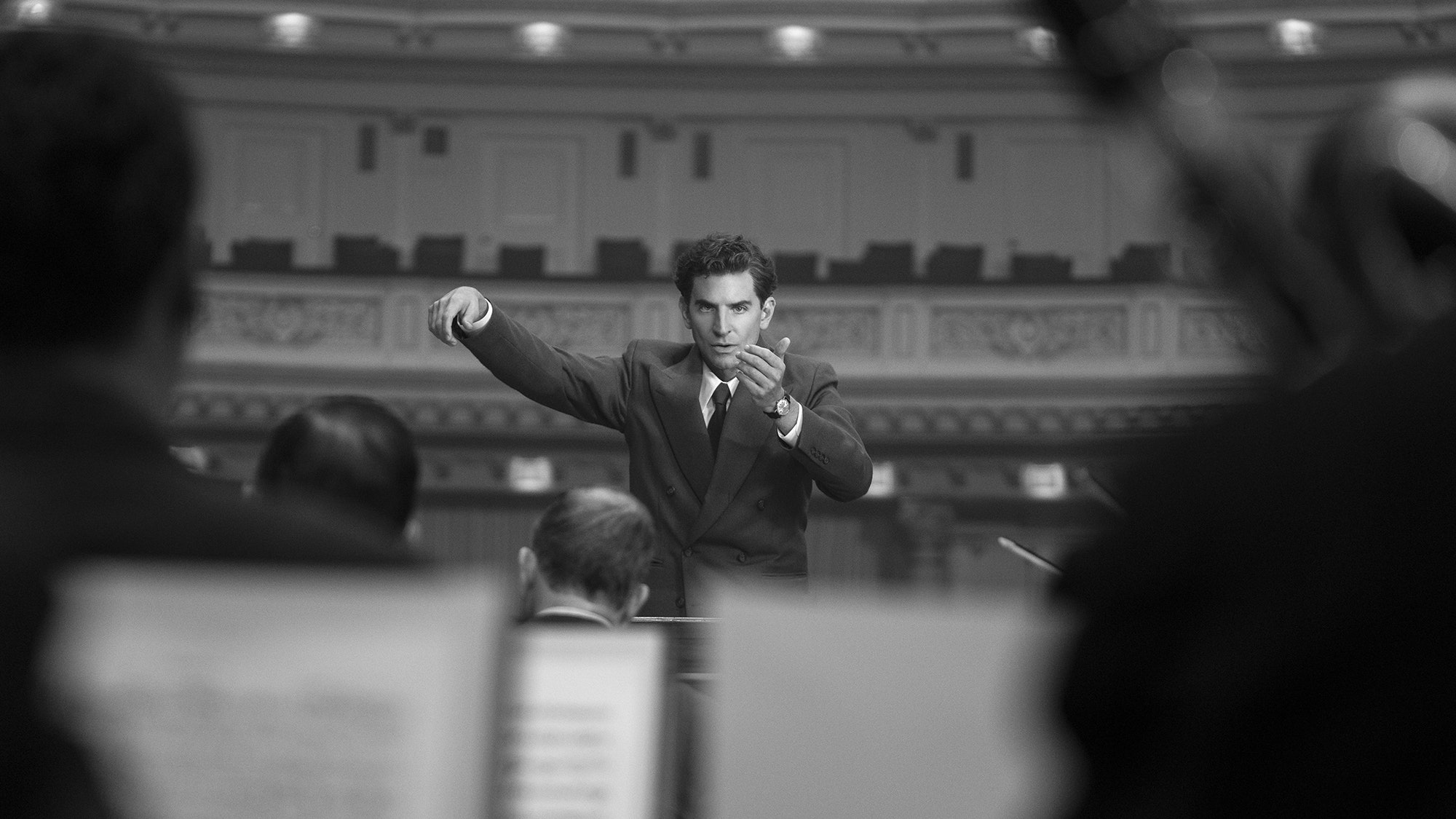If you’re a professional conductor, the past two years have been particularly thrilling. “It’s rare that that part of my world is shown to a wider audience,” says Andrew Resnick, who has conducted the likes of The Cher Show and Parade on Broadway. But thanks to the releases of Tár last year and Maestro this year, the act of conducting has been thrust into the spotlight.
It has also, inevitably, brought those films’ two lead performances into conversation with one another. Both Cate Blanchett as the eponymous (but sadly not real) Lydia Tár and Bradley Cooper as the maestro himself, Leonard Bernstein, paint nuanced portraits of conductors with thorny personal lives. Both actors also take center stage in a more literal sense, standing before podiums and waving their arms in front of musicians playing live. Do real conductors think they pull it off?
For the most part, yes. “I would give them both a lot of credit for stepping into that vulnerable position and really embodying it,” Resnick says.
Quite obviously, the key difference here is that Blanchett was inventing a character from scratch—a cocky, powerful lesbian headed for her downfall—while Cooper is specifically trying to mimic Leonard Bernstein, a man whose actual conducting was captured countless times. Both actors trained with professionals: Natalie Murray Beale coached Blanchett, while Metropolitan Opera music director Yannick Nézet-Séguin was the consultant for Cooper and Maestro. Cooper has discussed how he spent six years prepping for one sequence in which Bernstein conducts Mahler’s Symphony No.2 at the Ely Cathedral in the UK.
David Bloom, who teaches conducting at NYU and has conducted at Carnegie Hall and the Walt Disney Concert Hall, was impressed by Blanchett. “I was just surprised at how good Cate Blanchett is at conducting,” he says, “I think her technique is really efficient and sharp-edged.”
Bloom could see how the star brought her bombastic, braggadocious Lydia into the way her character approached the orchestra. “I think her conducting is often more than a little overbearing, which I think is shaped by the way Blanchett sees and plays this character,” he says.
Resnick was a little less enthused by Blanchett’s technique. If Lydia Tár is truly as great as everyone says she is, he thinks, her conducting would have been a bit better. “The technique to me looked like someone who had been conducting for maybe a few years, or they had a really formative summer at conducting camp or a really good first few years at undergraduate conducting,” he says. “It didn’t speak of someone [who had] the stature that she was being portrayed as embodying. But for someone who had weeks or months of training, I thought she did a very nice job.”
Both conductors think that Cooper, on the other hand, matched Bernstein’s passion and energy. The video of Bernstein doing Mahler is a favorite at conducting camp. “I don’t know how many times I’ve watched that video—dozens,” says Resnick. And Cooper largely gets it right. “It was clear that he put in so much effort and love into it. The big peaks of that video, he actually captured in a way that looked pretty authentic.” Resnick has only small nitpicks. “There are a few moments where he added a beat but in terms of the general [gestalt] of the thing, he captured it—and that’s also a hard thing to imitate and make seem real and authentic.”
Bloom meanwhile thinks Cooper’s Bernstein is a bit more spry at the cathedral than the man really was at that time. “Cooper’s kind of darting around the podium and looking between the soloists and the orchestra and the choir, whereas Bernstein is mostly rooted.”
It’s a discrepancy that speaks to one of the most common misconceptions about conducting. Neophytes believe that it’s all about fast motion, but “often in conducting, one needs moments of stillness and of connection to the sound,” Bloom says. Cooper, he adds, doesn’t quite find that stillness in the same way the real Bernstein does.
“There are a few moments where Bernstein in that Ely Cathedral performance stops time,” Bloom says. “He’s like suspending a chord, he’s heightening its tension. In those moments, he will hold still, or kind of shake the sound like he’s holding something heavy. Cooper often doesn’t quite achieve that. He gives some extra beats instead of holding that suspended animation.”
Bloom’s favorite moments of Cooper’s conducting actually come elsewhere in Maestro, particularly the scene where Bernstein is directing a choir singing his operetta Candide: “He is just all eye-contact with the singers. He is just this radiant font of energy and love,” Bloom says. “He really expresses the music very beautifully.”
Ultimately, Bloom is reluctant to say whether one actor conducts better than the other. “Often in Cate Blanchett’s conducting she’s portraying a character who is not giving as much of the emotional connection as Bernstein—this real person—gave to performers,” he says. “So from that angle, I prefer the loving gradients that Cooper has on the podium.”
Put both performers together, though, and they capture the elements of a successful conductor. “Those are really the two sides of the coin that one has to balance on the podium: clarity and expression,” he says. “Blanchett, in her portrayal of Lydia Tár, went for the clarity, for the exactitude. And Cooper went for the expression.”
More Great Stories from Vanity Fair
See 11 Spectacular Stars Unite for the 30th Annual Hollywood Issue
Inside Johnny Depp’s Epic Bromance With Saudi Crown Prince MBS
He Wrote About His Late Wife’s Affairs. He’s Ready to Move On.
Secrets, Threats, and the "Sixth Largest Nuclear Nation on Earth"
Who Were the Swans? Inside Truman Capote’s High Society
Cast Your Vote With the Official Vanity Fair Oscar Ballot
